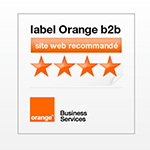
I was lucky enough to have in hands “Toward Enterprise 2.0”, a recent study of Enterprise 2.0 adoption, conducted by Cecile Demailly, from Early Strategies consulting agency. This survey unveils many interesting results about transformation strategies, and about the perception that actors of the change have.
This survey “was offered online from November 2009 to January 2010, and was answered by a primary set of people involved in Enterprise 2.0 deployment, and a secondary audience of well-informed users of Enterprise 2.0 applications and projects. The 50 respondents are mainly located in France (48%), the US (18%), the UK (12%) and the Netherlands (10%)”.
As no surprise, most of the themes emerging from this survey match commonly heralded attitudes and necessities. The report explicitly states that “organizations face a paradox that often happens with adoption of disruptive change (whether it is technology, work methods or management patterns): they have to cope with it, but cannot yet justify it nor master the transformation because it is too early, too little history and case studies to learn the lessons from others”. Despite the fact that most respondents see themselves as pioneers, one of the key findings of the study is that “there are good links between the organizational values and the transformation goals, ROI expected and success factors”, and that “this sense needs to exist at different levels. The most obvious being at the organizational level, the most enduring being at individual level, and the least recognized, probably, being at management level”.
I won’t detail the numerous results of this 37 pages report, which you can buy on the Early Strategies website. I want instead to highlight some quite disturbing findings which, in my opinion, highlight the shortcomings of present adoption approaches and expectations.
Although considered as an intangible ROI of E2.0 adoption, “better innovation” is cited by 70% of respondents; but when asked about the impact of the tools in their daily work, innovation is no more on the list of positive outcomes. What is happening here? Cecile suggested me that innovation is an organization-wide vision, while people think it only has a very limited impact in their own tasks. My opinion is a bit different, since innovation seems to be also absent from organization-wide usefulness results: albeit innovation is seen as a capital competitive advantage, present adoption frameworks of 2.0 technologies do not create the necessary organizational structures to foster it.
Another matter of concern relates to the learning programs and medium used by companies to accompany the change. Unstructured programs account for only 17% of the total learning efforts, and collaborative unstructured learning takes place in a small 14% of all the media used. Knowing that 80% of organizational knowledge is tacit, and that collaborative tools are, by far, the best medium to be used to set up informal learning, it looks like adoption guidance takes place without harnessing the inherent power of the tools themselves. We are trying to deal with a new paradigm with the methods and processes inherited from conventional “Enterprise 1.0” thinking. What we need is a huge reappraisal of our change management methods.
I was also puzzled to read that the marketing department was not involved at all during adoption for all B2C respondents. The report states that “this might not be meaningful given the size of the panel”. What a relief… But as partial as they are, those results state that some companies ARE in fact trying to implement Enterprise 2.0 as a closed system, keeping the client view away from the change. This is quite frightening.
Diving into complexity is for sure a bold move. But some of the results from the report suggest that the necessary change from a process-based organization toward a network-based ecosystem, collaborative, innovation and client-centric, is not taking place the way it should. The era of socialwashing seems now behind us, but are present Enterprise 2.0 adoption frameworks REALLY changing organizations, or are we just pushing further a square peg into a round hole, trying to fit a new paradigm into an obsolete one? I would love to read your view about it.






Sounds like innovation is a strategic initiative, which means no one is responsible for it, there’s no direct funding for it, and there’s no accountability for it (save for some ‘committee’ to report on its progress).
You have a great point here, Paula. This highlights the disconnect between board and operations, between enterprise’s reality and how it is perceived by C-level managers. Strong sponsorship is often a requisite for Enterprise 2.0 initiatives, but has this any effect on governance change? We might doubt.
Pingback: Early Strategies blog » Blog Archive » Reviews of “Toward Enterprise 2.0″ research report
Hi Thierry,
Excellent review. I am bit torn here really. I understand you are upset with the fact that companies are not going the real 2.0 way for innovation, informal learning and marketing.
My take is that we should be glad that the adoption is starting. I guess that in the long run, the usages and cultures will change to leverage the full capability of these platforms. It won’t happen overnight, it will be a long process.
I personally am happy with the fact that something has started and people are able to identify aded value even if it’s only a limited part of the e20 potential.
Hi Cecil,
Thanks for your comment. You are right, we should rejoice that something has started here. I wanted to raise some warnings, since so many things can, as they already did in past, go wrong and spoil the most meaningful change. Until e20 becomes a tidal wave, we really have to beware. Failure at involving marketing in some B2C companies, for instance, is more than a concern for me.
Pingback: uberVU - social comments
Pingback: Reviews on “Toward Enterprise 2.0″ research report « Early Strategies